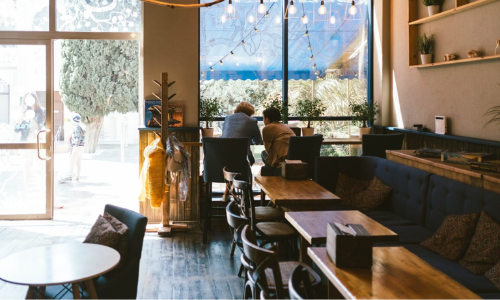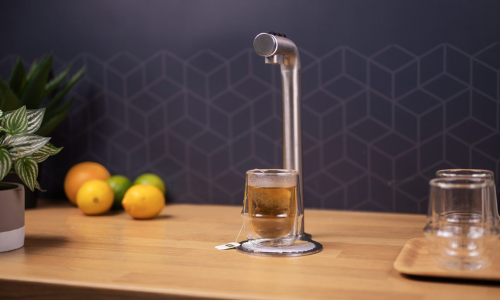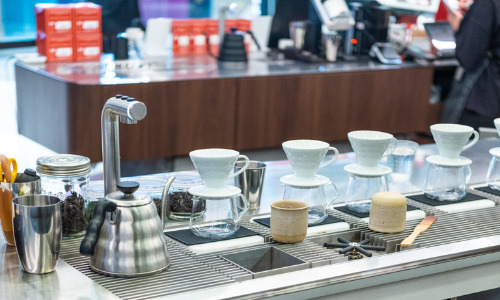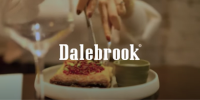Guest Post: How to off-set rising energy costs with flexible and efficient beverage systems

Energy costs have been rising across Europe over the last few months. In the UK in particular, prices peaked in mid-December 2021. This, in addition to an acute labour shortage and supply chain disruption has meant that the cost of doing business is weighing heavily on the minds of those in the HORECA industry.
However, thanks to advancements in beverage equipment design, the industry now has a range of beverage equipment designed to help save energy, improve speed of service, and enable menu flexibility.
The team of experts at Marco Beverage Systems explain the HORECA industry can combat rising prices and drive efficiency with smart beverage coffee and water systems.

How The Rise In Prices Affects The Hospitality Sector
Rising energy costs have a direct and indirect impact on the operational costs of a business. In the case of catering sites and coffee shops, energy costs directly impact the cost of running their business. Just think of things such as heating, lighting in addition to the need for equipment that will prep, serve, and store their product, for example, chilling, cooking, preparing or storing cold and hot drinks.
The main benefits of making a HORECA business more energy-efficient, is not just the reduced costs for running the business but also contributes to a reduced carbon impact and an improved brand image.
These benefits are critical for the hospitality industry which needs to maintain a wide range of equipment, including ovens, air conditioners, espresso machines, water boilers, water chillers, refrigerators, and cleaning devices.
While the hospitality industry is one of the most energy-intensive sectors, finding ways to conserve energy-use, improve speed of service and broaden menu range have all been at the forefront of business owners’ minds in recent months.

How Can Efficient Beverage Equipment Combat Rising Energy Prices?
Several practical actions can be taken by the hospitality industry, starting with comparing and sourcing electricity and gas suppliers.
It is essential to select energy-efficient equipment and consider whether the dimensions of the equipment meet your needs. For example, a 20L water boiler may not be necessary if the peak boiling water requirement is 5L at any point in the day, says Shane.
One of the ways to avoid wasting energy is by reviewing your current use and matching it to your needs. Some machines, such as bulk brewers, will also provide large volumes of hot water. This may be enough water to meet demand during off-peak periods, in which case the secondary water boilers can be turned off.

Marco MIX: A Leader in Energy-Efficient Water Boiler
An ultra-low heat loss boiler, like the one in Marco MIX, costs less to run. In addition, MIX ensures proper sizing according to the facility’s needs. This allows the facility to produce the required near-boiling water and avoid excess or wasted energy.
The Marco MIX water boiler works with a heat or fills cycle where a small amount of cold water is added to the boiler each time it is heated to maintain an adequate operating temperature – this means that the Marco boiler is always at an acceptable operating temperature, within 3 degrees of the set temperature.
Moreover, all Marco MIX water boilers an insulated water tank to reduce heat loss. The MIX range of boilers has vacuum insulation, ensuring the lowest heat loss among catering boilers.
Advantages and Comparisons of Marco MIX with Older Water Boilers
Marco’s newer boilers such as the Marco MIX use advanced water filling methods, from software logic to control water in and out, leading to reducing tank size while maintaining the same or better performance than older machines.
Many competitors still use simple controls, requiring them to use very large tanks to maintain temperature stability.
The smaller tank means less steel is used initially. You naturally get less heat loss with a smaller tank. Less water is wasted since many competitors store a large percentage of the total water below the tap level – so it can never be used.
Which boilers are best suited to each site? Take into account three main criteria:
Size and application: Match the volume of water you need during general usage and peak demand against the immediate draw-off and recovery time of the boiler. For instance, a 5L boiler for a small coffee shop and perhaps a 20L boiler for a busy commercial kitchen where high volumes of immediate draw-off might be required, says Shane.
Application and Function: In this case, you need to assess who the boiler will be used by, a customer or assisted service, and whether a volumetric distribution is required. “For example, a push-button application may be more suitable for a self-service application rather than a tap application.
Aesthetics: Here, you need to evaluate how the boiler will be positioned and whether or not it will be visible to the customer.
How Flexible Beverage Equipment Can Improve Speed of Service and Drive Efficiency?
The other key differentiator of the MIX is that it is one of the few water boilers on the market that allows users to set three different temperatures, to be dispensed from the one system.
This means that MIX boilers can improve productivity by being used to dispense a wide range of different beverages and products, such as americanos, tea and even soup. MIX streamlines speed of service and workflow as it can be programmed to dispense accurate volumes with a single push of a button, meaning baristas or users can move on to other tasks while a drink is being poured.
When it comes to how companies can make the best use of their boilers, typically, one way to use a boiler is to turn it off unless needed. For example, it can be turned off at a closing time and have a timer to turn it back on in the morning to reach the correct temperature when first needed.
Marco FRIIA
When we talk about flexible water systems, we should also mention the Marco FRIIA, a stylish, multifunctional, and sustainable water fountain in line with the changes around SUP and the need for reducing single plastics.
FRIIA allows both foodservice, offices, canteens, gyms, schools, colleges, and small cafes to get versatile equipment. It can dispense hot, cold or sparkling water, whilst helping sites reduce their SUP.
FRIIA also means that sites don’t need to invest in several pieces of kit to serve different beverages. Sites can deliver hot water for americanos or tea, whilst also offering sparkling or cold water to their customers. By placing FRIIA at the point of service, a server doesn’t need to move around the shop or site to get different beverages (such as bottled water on one side, tea on the other.) FRIIA allows for a much improved workflow whilst still offering a good range of beverages to customers.

Marco POUR’D
Finally, one of the most innovative products to be brough onto the market in recent years is the Marco POUR’D.
POUR’D is the perfect solution for any business that wants to serve cold coffee which is one of the fastest growing and most popular beverages for consumers.
Cold coffee can take the form of cold brew, iced coffee, or even coffee cocktails. These drinks are relatively easy to make and can freshen up any café menu during the summer months. While younger consumers are the main drivers of interest for cold beverages, the segment keeps expanding.
However, offering more beverage options can be challenging for sites looking to keep their costs down. Sites may need to either invest in more equipment or find more suppliers. It is also a time consuming drink to serve to customers.
Equipment such as Marco’s POUR’D is perfect for any hospitality site looking to add new levels of variety to their menu. POUR’D is basically the easiest, most flexible and quickest way to serve a variety of cold coffee. It comes in either a ready-to-drink (RTD) or concentrate option.
POUR’D Ready to Drink
The POUR’D RTD option is simple, sleek, and easy-to-use. Offices, coffee shops and catering sites can dispense cold coffee straight from a bag-in-box, urn, or container. Again, programmable, and automated portion control means baristas can serve cold brew at the push of a button and don’t need to walk to a fridge or storeroom.
POUR’D Concentrate
In concentrate varieties, POUR’D can dispense a range of drinks from a single concentrate coffee source. POUR’D automates the dilution process, using either chilled or mains water to dilute the concentrate for cold coffee.
The POUR’D 3 Button Concentrate variety also provides a single, separate water line within the countertop font. Customers have the option of adding a water boiler or a water chiller to dispense either hot or cold water from the font, meaning POUR’D can deliver any combination of:
Think of all the beverage possibility from a single system.
Thanks to the team at Marco Beverage Systems, hospitality businesses now have a range of tips and product suggestions to drive efficiency, improve workflow and continue to offer customers a wide range of beverage options.
Contact us at sales@marco.ie for more info on any product mentioned above.




Leave a comment